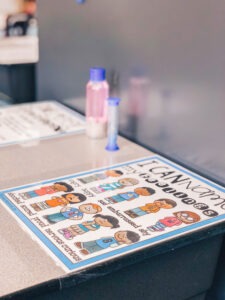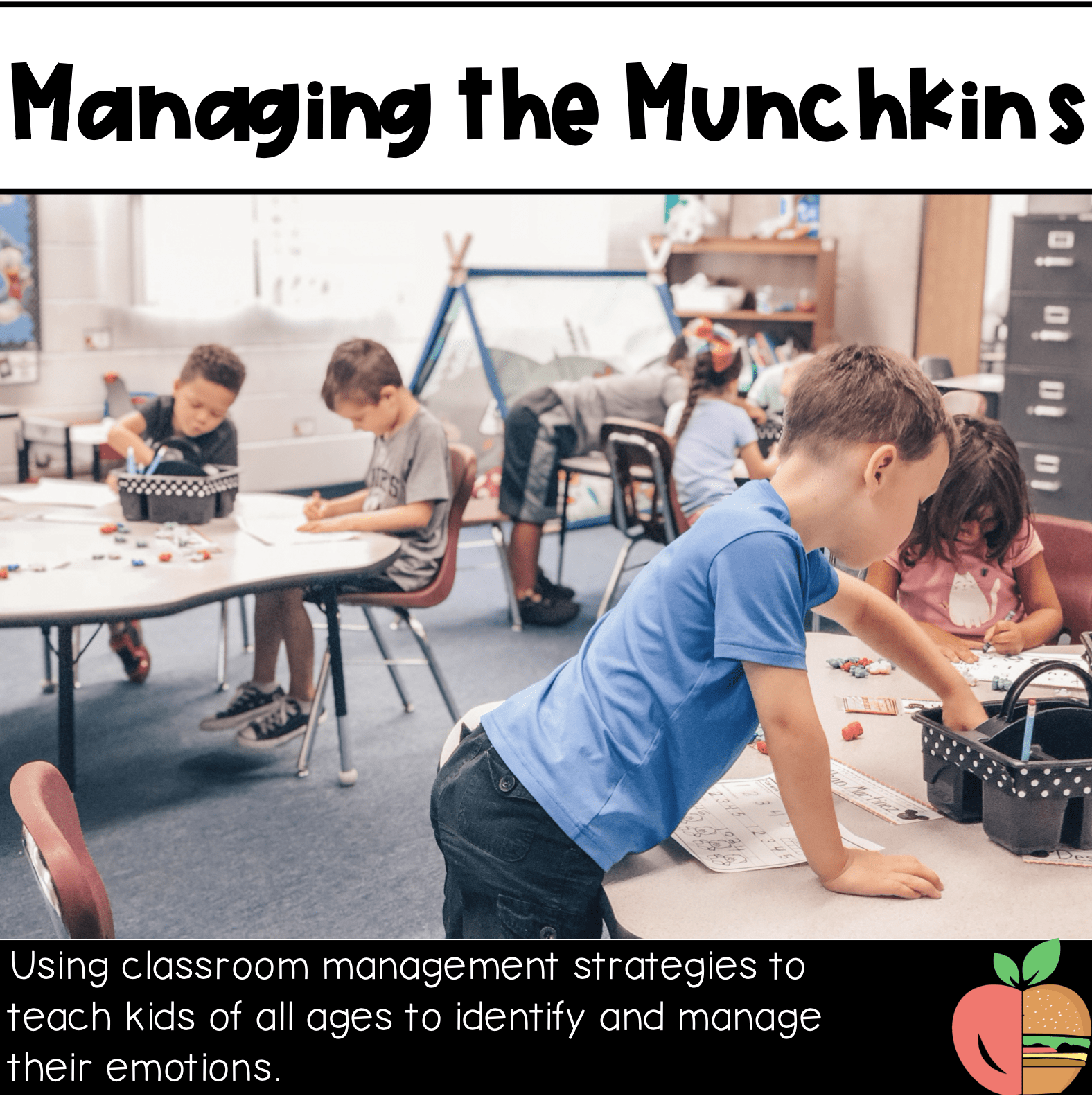Using classroom management strategies to teach kids of all ages to identify and manage their emotions.
 In my opinion, classroom management is one of the most difficult parts of teaching. As I explained in my Classroom Management 101 post, you’re throwing together 20 or more little bodies, with 20 or more different family backgrounds, beliefs, and parenting strategies. Disagreements are bound to arise!
In my opinion, classroom management is one of the most difficult parts of teaching. As I explained in my Classroom Management 101 post, you’re throwing together 20 or more little bodies, with 20 or more different family backgrounds, beliefs, and parenting strategies. Disagreements are bound to arise!
Add to that the fact that the prefrontal cortex does not fully develop until early adulthood, and you have a room of tiny humans that do not fully understand their emotions yet or how to regulate them. That’s where classroom management comes in!
But classroom management is so much more than children listening to you and completing their assignments like little robots. Classroom management also includes teaching children how to identify their emotions, communicate them, and find positive ways to release them.
Primary:
 First of all, regardless of age, all emotions are valid! That being said, children in primary, especially kindergarten, are still working to identify basic emotions. They will often go for what I call “The Big Three”: mad, sad, happy. While I allow those three toward the beginning of the school year, I eventually require even my kindergarteners to choose a different, more specific word.
First of all, regardless of age, all emotions are valid! That being said, children in primary, especially kindergarten, are still working to identify basic emotions. They will often go for what I call “The Big Three”: mad, sad, happy. While I allow those three toward the beginning of the school year, I eventually require even my kindergarteners to choose a different, more specific word.
A great way to help young children identify emotions is through read-alouds! Books like “How Are You Peeling?” by Saxton Freymann and Joost Elffers, “The Feelings Book” by Todd Parr, and “B is for Breathe” by Dr. Melissa Munro Boyd can be a great starting point for class discussions on emotions and how we deal with them!
When I taught kindergarten, I used to read the “Peeling” book each year during the first couple weeks of school. When we were done reading, we would play “What am I Peeling?” I would make a face and whoever guessed the emotion on my face got to be “it” next and make a new face for his or her classmates to guess!
Once primary students begin to identify emotions other than mad, they also begin to make connections to better ways of dealing with those emotions. Rather than punching someone for annoying them, the child starts to figure out that it makes more sense to tell their classmate to stop or to tell the teacher.
Intermediate:
 Older children in my experience tend to struggle a bit less than their younger peers with identifying and handling their emotions, but they still need reminders. Again, I teach my children that all emotions are valid. It’s how they handle their emotions that makes the difference.
Older children in my experience tend to struggle a bit less than their younger peers with identifying and handling their emotions, but they still need reminders. Again, I teach my children that all emotions are valid. It’s how they handle their emotions that makes the difference.
By the time students reach late elementary school, they should be able to identify a larger variety of emotions. At the Title 1 school I work in, I don’t tend to see as much “hands-on” behaviors in intermediate as I do unkind words. In these cases, my personal favorite way to help the kiddos talk through their feelings is to use emojis!
In my intermediate Cool Down Spot, I have items such as noise blocking headphones, fidget items, and crayons. At the beginning of each school year, I identify the cool down spot for my class. I show them each of the fidget items, and how to use them. I make it very clear that this is not a play area or an area to get out of doing work.
In order to enforce this, I tell the children that they are allowed to visit at any time they like, but they must write me an “I Am Feeling” paper. On this paper, they draw the emoji that best matches their emotion. Then, they have to write me a sentence or two telling me why they feel this way. After showing me their completed paper, we discuss what happened and better ways to handle their emotions if we need to.
These papers are also FABULOUS for data tracking! It’s always better when a parent comes in for a conference to show the parent their child’s emotions in their own writing.
 Click here to download my FREE behavior management tracking plan!
Click here to download my FREE behavior management tracking plan!

